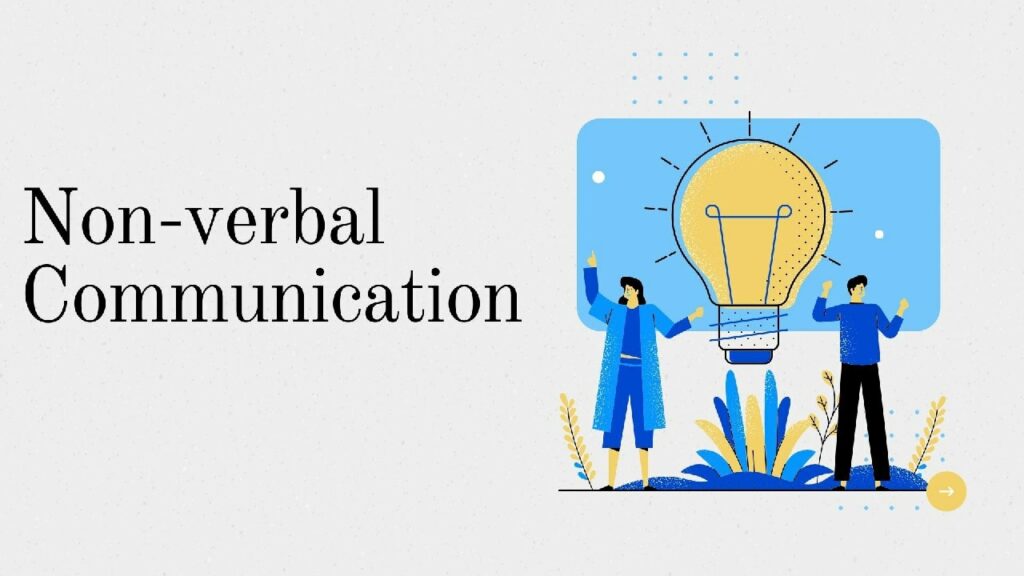We often communicate without saying a word. Research suggests that nonverbal communication makes up about two-thirds of all communication. So, what is it? In this blog post, we will explore the concept of nonverbal communication in detail. We will look at examples of nonverbal communication and tips for improving your skills in this area.
Contents
- 1 Understanding Nonverbal Communication
- 2 Reading Nonverbal Communication Cues
- 3 Evaluating Nonverbal communication
- 4 Looking At Examples of Nonverbal Communication
- 5 Studying Nonverbals In Different Settings
- 6 Improving Nonverbal Communication
- 7 Controlling Nonverbal Communication
- 8 Hearing From Experts
- 9 Conclusion
- 10 A Word From Therapy Mantra
Understanding Nonverbal Communication
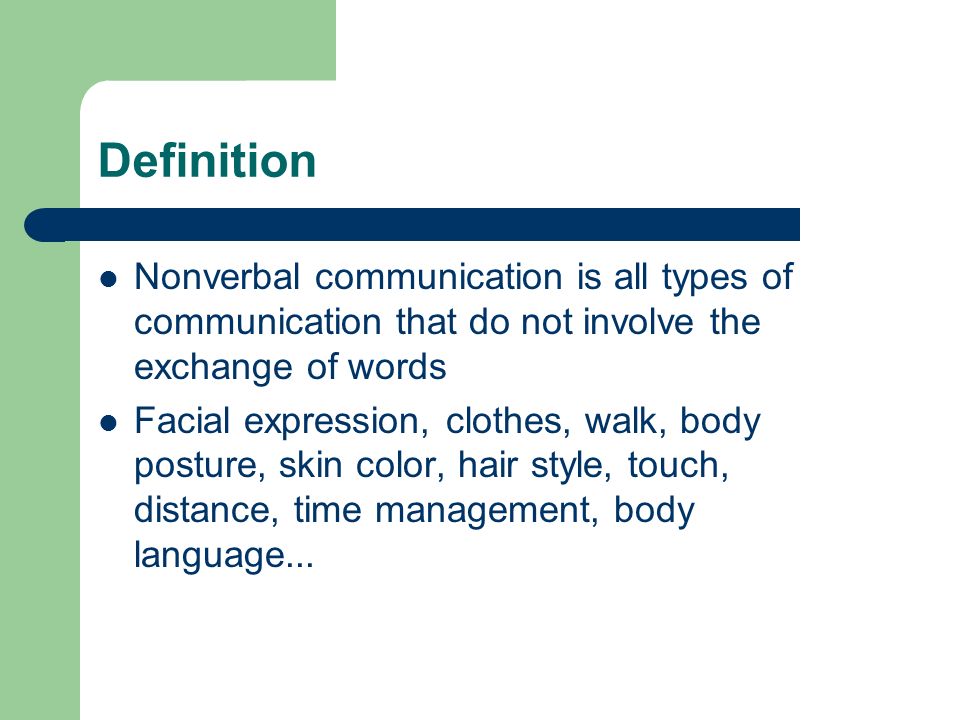
Nonverbal communication is the process of sending and receiving messages without using words. It includes gestures, facial expressions, posture, eye contact, touch, and the use of space. Nonverbal communication can be used to communicate emotions, thoughts, intentions, or needs.
Importance of Nonverbal Communication
Nonverbal communication is often more important than verbal communication. It can be used to express things that you cannot say with words, such as emotions or feelings. Nonverbal communication plays a very important role in our lives. It can help us share information, express emotions, build relationships. Nonverbal communication can also help to clarify the meaning of verbal communication.
Roles of Nonverbal Communication
Nonverbal communication can play different roles in our lives:
Channel of Emotion: Nonverbal communication can express emotions that we cannot say with words. For example, when we are sad, we might cry. This allows us to communicate our feelings to others.
Convey Information: Nonverbal communication can also be used to convey information. For example, when a teacher claps their hands it may signal that the class should be quiet and sit down.
Substitute For Speech: Finally, nonverbal communication can substitute speech in some situations. For example, if someone is deaf they may use gestures instead of speech to communicate with others.
Regulator of Interaction: Nonverbal communication can help regulate interactions by regulating the flow of conversation or participation in activities. For example, if someone wants to speak at a meeting they might raise their hand to get permission from the leader.
Repair Mistakes: Nonverbal communication can also be used to repair mistakes or clarify meaning. For example, if someone misunderstands what you are saying they might ask for clarification by raising their eyebrows or tilting their head to one side.
Express Emotions: Nonverbal communication can help us express our emotions without using words. Imagine if you were listening to a sad song and wanted someone else in the room to know how you were feeling. You could express your sadness by crying, or by putting your hand on your heart.
Build Relationships: Nonverbal communication can also help us build relationships with others. For example, when we smile at someone, they are more likely to smile back. This helps to create a positive interaction and strengthens the relationship.
NOTE: Nonverbal communication can also be used as a substitute for speaking in situations when you don’t want to speak out loud, such as at a funeral or in church.
Reading Nonverbal Communication Cues
Some general rules can help you understand nonverbal communication cues. Here are a few of them:
Context: The context in which the communication is taking place is also important. For example, if someone is smiling at you in a friendly way then it’s likely that they are happy to see you. But if someone creepily smiles at you then it’s likely that they are trying to scare you.
Contextual Cues: Contextual cues can also help you understand nonverbal communication. For example, if someone is speaking to you in a loud voice and making lots of hand gestures, they are likely trying to emphasize what they are saying.
Timing: The timing of a particular nonverbal cue can also be important. For example, if someone nods their head while you are speaking, they are agreeing with what you are saying. But if they nod their head after you have finished speaking, they may be indicating that they want to say something.
Cultural Cues: Different cultures have different ways of communicating nonverbally. For example, in some cultures, it’s normal to make eye contact while speaking whereas in others this would be considered rude or intimidating. You must understand the culture before interpreting its nonverbal communication cues because otherwise, you may end up misunderstanding the person.
Evaluating Nonverbal communication
When we are trying to evaluate nonverbal communication, it is important to consider all of the different types of signals that are being sent. We also need to be aware of the fact that nonverbal communication can be used to contradict what is being said verbally.
For example, if someone says they are happy but their body language indicates that they are sad or angry, then we know that what they’re saying doesn’t match up with how they feel.
We can also evaluate nonverbal communication by considering the context in which it occurs and taking into account any past experiences we have had with that person.
How Can It Go Wrong
There are a few different ways in which nonverbal communication can go wrong. For one, people may not be sending accurate signals with their body language or facial expressions. This can be because they are not aware of what their body is doing or they may be trying to mislead others.
In addition, nonverbal communication can be misinterpreted if the signals are not clear or if the person receiving them is not paying close attention. Finally, nonverbal cues can be overruled by verbal communication, meaning that if someone says something that contradicts their body language, we will usually believe what they say over what they are trying to communicate with their body.
Can It Be Faked
While it is possible to fake some aspects of nonverbal communication, such as facial expressions or gestures, it is much more difficult to convincingly imitate someone’s tone of voice or posture.
In general, people are good at detecting when someone is not being genuine so it is unlikely that you will be able to successfully deceive others with your body language.
How It Clarify Meaning of Verbal Communication
Nonverbal communication can often help to clarify the meaning of verbal communication. For example, if someone is speaking in a low tone, we may assume that they are serious about what they are saying. Alternatively, if someone is gesturing wildly while they speak, we might think that they are excited or angry about what they are saying.
Additionally, nonverbal communication can be used to contradict verbal communication if the two don’t match up. For instance, someone who is speaking in a low tone might be trying not to appear nervous or scared of something while someone who is gesturing wildly might be trying to calm down.
Looking At Examples of Nonverbal Communication
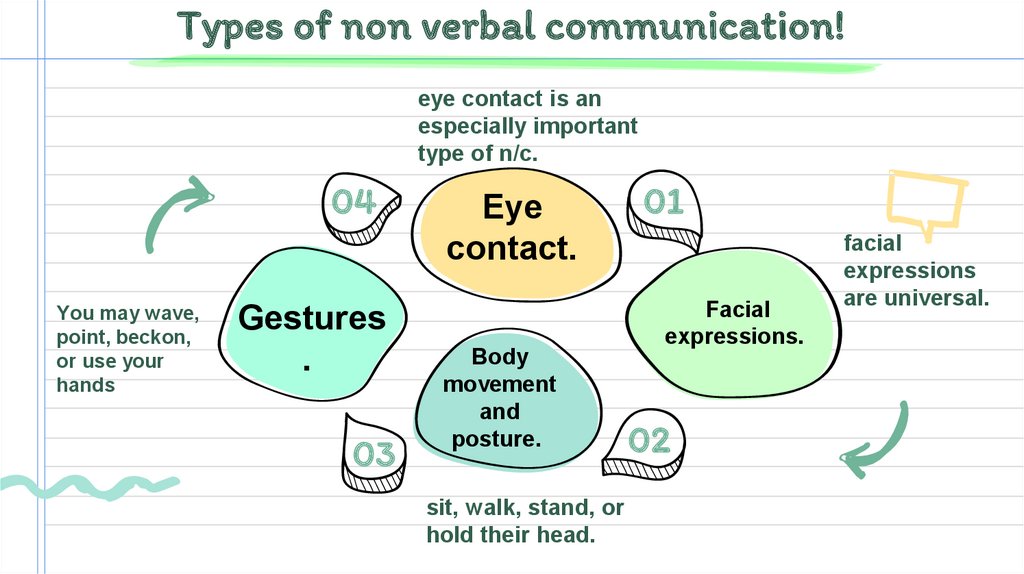
There are many types of nonverbal communication. Here’s a brief description of each type:
Gestures: The use of gestures such as hand signals or body language to communicate with others is known as gesture communication.
The tone of Voice: Speaking in a low or high tone, as well as speaking quickly or slowly, can affect how seriously others take you.
Eye Contact: Looking someone in the eye when you are speaking to them is a form of nonverbal communication known as eye contact communication.
Distance: Standing too close or too far away from someone during a conversation can make them feel uncomfortable.
Timing: Pausing after someone has spoken to you shows that you are considering what they have said while talking over someone may make them feel like their opinion doesn’t matter.
Body Language: Crossing your arms and legs shows that you are closed off while keeping an open posture indicates openness to new ideas from others.
Grooming: Wearing nice clothes or having a neat appearance can show that you care about what people think of you while looking messy can send the message that you don’t care about your appearance.
Facial Expressions: Using facial expressions to communicate emotions, such as smiling when happy or frowning when angry, is known as facial expression communication.
Touch: Touching another person can be used for nonverbal communication. For example, shaking hands or patting someone on the back are both forms of touch communication.
Space: Using space around you to communicate with others is known as spatial communication. Some examples include sitting close together or taking up a lot of room by spreading out your arms and legs.
Posture: The way you hold your body can be one way of nonverbal communication. For example, if someone sits up straight and looks at you with their arms crossed, they may be indicating that they are not interested in what you have to say.
Studying Nonverbals In Different Settings
Nonverbal communication can be studied in different settings.
For example, we could observe how people use nonverbal communication when they are talking to their friends or family members and compare that with how they use nonverbal cues when speaking at work.
Non-Verbal Communication in Workplace
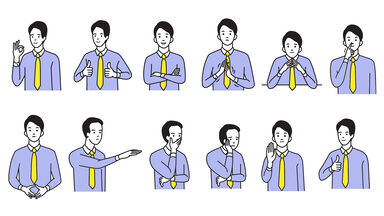
When Sarah got a promotion to a management position within her company. She knew that she would need to start paying more attention to her nonverbal communication. As one of her employees, John, was having trouble adjusting to his new role. And Sarah could tell that he was feeling resentful.
She decided to sit down with him and have a conversation about his concerns. During the meeting, Sarah made sure to keep an open posture and use positive body language. She also made sure to maintain eye contact and smile often. Throughout the conversation, Sarah noticed that John was folding his arms across his chest while looking down at the ground.
After their meeting, she told him that he seemed upset with her and asked if anything was wrong. He said it wasn’t but then admitted that he didn’t like his new position. That’s when Sarah realized that she had been right all along – John was feeling frustrated with his job but didn’t want to admit it because he thought she might fire him if he complained too much.
The Key Message
Because Sarah knew how important nonverbal communication is in the workplace, she was able to pick up on John’s body language cues and ask him directly about his concerns. She also made sure that her nonverbal communication was sending a message of openness and understanding, which helped John feel more comfortable talking with her.
Non-verbal Communication In Relationship

John and Mary have been dating for three months. They met on an online dating site and have been seeing each other every week since then. One day after dinner at his house, John asked Mary if she wanted to watch a movie with him in the living room. She said yes so they both got up from their seats at the kitchen table and walked down the hall toward his bedroom door.
Once they were inside, John turned around to face Mary and hugged her before kissing her on the cheek. He then took one step back and looked at her with an expression that said “I want you” while saying out loud how much he loved being together like this every day. Mary could feel butterflies in her stomach as she was looking up into his eyes. She could feel/sense love and desire for her.
She could feel herself getting excited just thinking about what might happen next but then he turned away from her again to walk over towards the couch where they had been sitting earlier before coming back into this room together after dinner.
If John had hugged and kissed Mary when they were both still in the kitchen, it would have meant something completely different than what he did when they were inside his bedroom. By waiting until they were in a more intimate setting, John was able to send a stronger message with his nonverbal communication that he wanted to make love to her.
The Key Message
This example shows how important it is to be aware of your surroundings when sending nonverbal messages. John knew that if he had hugged and kissed Mary while they were both still in the kitchen, she might have taken it as nothing more than an expression of affection between friends or family members rather than a romantic gesture on his part.
Non-Verbal Communication in Courtroom Settings
Nonverbal communication is also a matter of consideration in the courtroom when trying to determine whether a person is lying. There are a few different techniques that experts use to try to detect deceit. Such as studying a person’s facial expressions and body language for any inconsistencies.
In addition, they may ask questions that are to get the person to lie or reveal what they are hiding. Some experts believe that nonverbal cues can help them detect deceit. But there is still much debate over whether or not this method works.
Especially, there is a debate over how useful these types of cues are at detecting deception. Since they often contradict each other. So it’s difficult to know what message is being sent by one person versus another.
Improving Nonverbal Communication
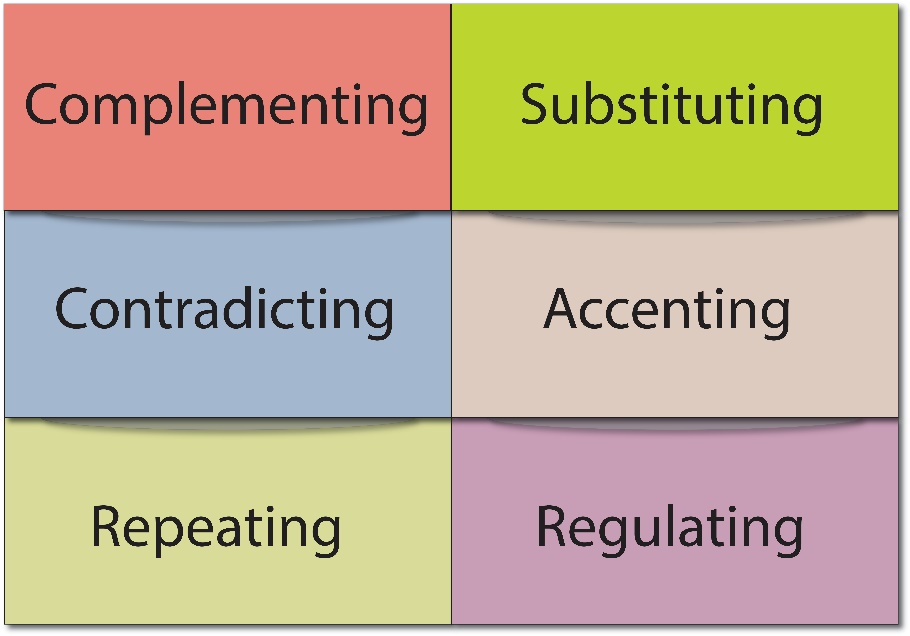
You can learn nonverbal communication skills by paying attention to how people use their bodies. Especially when they speak and interact with others. It may also be helpful for you to practice using various nonverbal cues in front of a mirror. So that you become familiar with what it feels like when you send out a particular message to someone else through your body language.
It’s also important for people who want to improve their communication skills. Not only to know how others use nonverbal cues. But also how they interpret these actions themselves. So that they can learn from them as well. By practicing and becoming aware of your body language, you’ll be able to use it more effectively in conversations with others as well.
General Tips for Effective Nonverbal Communication
- Be conscious of your body language and what it is saying to others.
- Try not to send mixed messages by having conflicting verbal and nonverbal communication.
- Pay attention to what other people’s bodies are doing. So you can get a better understanding of their feelings or intentions. That is through their gestures, facial expressions, and posture.
- Be aware of your body language and try to adjust it depending on the situation. For example, if you want to come across as more confident. Then stand up straight with your shoulders back and chest out.
- Recognize that nonverbal communication can be one way to deceive or mislead others. So be skeptical of what you see. And always try to confirm information with other sources.
Tips For Nonverbal Communication In Relationships
In relationships, nonverbal communication can be helpful to build trust, show affection, and convey messages that we may not feel comfortable saying out loud.
Some tips for using nonverbal communication in relationships include:
- Greeting your partner with a hug or kiss when you see their shows that you care about them.
- Making eye contact when talking to your partner shows that you are listening and paying attention.
- Using nonverbal cues such as hand gestures, facial expressions, and posture can help convey feelings or intentions. You can do it all without saying anything out loud.
NOTE: The way we communicate nonverbally in relationships can affect how others perceive us in both positive and negative ways.
Tips For Nonverbal Communication in the Workplace
In the workplace, it’s important to be aware of the different types of nonverbal communication that are taking place. This is because nonverbal communication can be helpful:
- to build relationships with co-workers,
- show respect for your boss, and
- convey authority.
Some tips for using nonverbal communication in the workplace include:
- Give people your full attention when they are speaking to you.
- Make eye contact when you are talking to someone.
- Shaking hands with people when you meet them.
- Smiling and nodding your head to show that you are listening.
- Using space around you to communicate with others is known as spatial communication.
- Looking at your watch or checking the time on your phone when someone is talking shows that you find boring.
- Use a low and slow tone of voice if you want people to take what you’re saying seriously.
- Use a high and fast tone of voice if you want people to know that you are joking around.
- You can also stand with your arms crossed across your chest. It will help convey authority over others in the workplace environment.
- Using hand gestures such as pointing, waving, or shaking hands when communicating with someone shows them that they have your attention. And that what they’re saying is important.
- If you want people to take you seriously, then you should use low and slow tones of voice. As well as make eye contact with people when they speak to you.
Controlling Nonverbal Communication
To control your nonverbal communication, you need to be aware of how you use them and what signals you are sending. You can then choose which types of nonverbal cues you want to send out. They must be based on the context in which they occur.
For example, if someone asks you a question but doesn’t make eye contact. You might want to maintain eye contact yourself. So that they know you are paying attention to them.
Alternatively, if someone is talking loudly and interrupting others in a meeting, then maintaining good posture could show that you are confident. About what you have said even though they may be trying to intimidate or belittle you.
Hearing From Experts
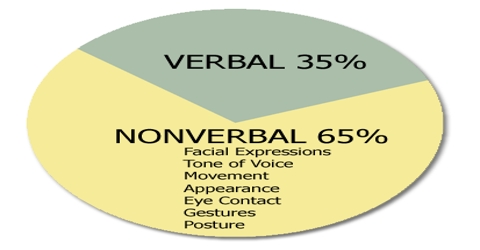
Aneesh Banerjee, Founder & CEO at Codinggarage.com
“There are many nonverbal cues that you can send to others during conversations. One of the most important is maintaining eye contact with your conversation partner while they speak; this shows interest in what they have to say which will make them more likely to listen to you.
Another important cue is nodding your head to show that you are following along. And agree with what they are saying. This will help to build rapport with the other person.”
Be aware of how you come across to others, both verbally and nonverbally. To have successful communication, it’s important that you make others feel comfortable around you. So that they can trust what are saying.
One way to do this is by maintaining eye contact during conversations or nodding your head when someone speaks. These nonverbal cues will show them that you care about their opinions. As well as being interested in what they have to say.
Case Study
The Power of Nonverbal Communication
In one study, a married couple was brought into the lab and asked to discuss their relationship problems. The researchers observed the nonverbal communication between the two spouses. And found that the wife tended to use more gestures and facial expressions than her husband did. They also noticed that when she became emotional, her husband would become more emotional as well.
The researchers interpreted this as the husband not being as emotionally expressive as his wife. And that he instead relied more on nonverbal communication to show how he was feeling. This study showed the importance of nonverbal cues in relationships. And how you can use them to better understand a person’s feelings or intentions.
The Key Message
Nonverbal communication can be one of the most powerful tools you have in your arsenal. It can help to build rapport with others, show interest and understanding, and even deceive or mislead people.
However, it’s important to be aware of how nonverbal communication works. And what signals you are sending out. So that you can control how you come across to others.
Conclusion
Nonverbal communication is a very important part of any relationship, whether it’s between friends or coworkers. This type of communication can tell you so much about what someone is feeling or thinking. Even if they aren’t saying anything out loud! It also helps us understand other people better. Since we can see their reactions in real-time. Instead of waiting for them to speak up.
A Word From Therapy Mantra
Your mental health — Your psychological, emotional, and social well-being — has an impact on every aspect of your life. Positive mental health essentially allows you to effectively deal with life’s everyday challenges.
At TherapyMantra, we have a team of therapists who provide affordable online therapy to assist you with issues such as depression, anxiety, stress, workplace Issues, addiction, relationship, OCD, LGBTQ, and PTSD. You can book a free therapy or download our free Android or iOS app.
